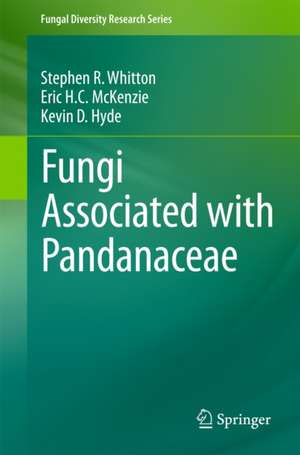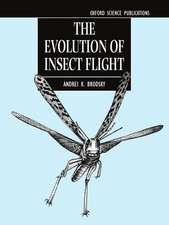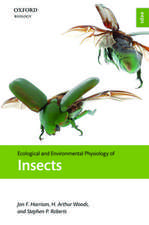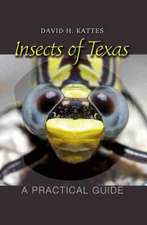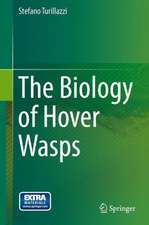Ecology of Cyanobacteria II: Their Diversity in Space and Time
Editat de Brian A. Whittonen Limba Engleză Paperback – 24 sep 2012
Please visit http://extras.springer.com/ to view Extra Materials belonging to this volume.
This book complements the highly successful Ecology of Cyanobacteria and integrates the discoveries of the past twelve years with the older literature.
| Toate formatele și edițiile | Preț | Express |
|---|---|---|
| Paperback (1) | 2158.00 lei 6-8 săpt. | |
| SPRINGER NETHERLANDS – 24 sep 2012 | 2158.00 lei 6-8 săpt. | |
| Hardback (1) | 2164.29 lei 3-5 săpt. | |
| SPRINGER NETHERLANDS – 5 iul 2012 | 2164.29 lei 3-5 săpt. |
Preț: 2158.00 lei
Preț vechi: 2631.71 lei
-18% Nou
Puncte Express: 3237
Preț estimativ în valută:
412.99€ • 429.57$ • 340.94£
412.99€ • 429.57$ • 340.94£
Carte tipărită la comandă
Livrare economică 14-28 aprilie
Preluare comenzi: 021 569.72.76
Specificații
ISBN-13: 9789400755987
ISBN-10: 9400755988
Pagini: 776
Ilustrații: XV, 760 p. 255 illus., 208 illus. in color.
Dimensiuni: 210 x 279 x 41 mm
Greutate: 2.43 kg
Ediția:2012
Editura: SPRINGER NETHERLANDS
Colecția Springer
Locul publicării:Dordrecht, Netherlands
ISBN-10: 9400755988
Pagini: 776
Ilustrații: XV, 760 p. 255 illus., 208 illus. in color.
Dimensiuni: 210 x 279 x 41 mm
Greutate: 2.43 kg
Ediția:2012
Editura: SPRINGER NETHERLANDS
Colecția Springer
Locul publicării:Dordrecht, Netherlands
Public țintă
ResearchCuprins
Environments.- Physiological Ecology.- Molecular Ecology.- The Organisms.- Applied Aspects.
Recenzii
From the reviews:
“Each chapter has an introduction, a detailed presentation of the topic with consistent information on the involved molecular aspects, and conclusions. … this book should be read from the brilliant preface to the last sentence of the final chapter by every (cyano)bacteriologist and (other) scientists involved in (general) ecology.” (Ioan I. Ardelean, Romanian Journal of Biochemistry, Vol. 51 (1), 2014)
“The book, together with its appendices, distils a remarkable overview of our current knowledge and understanding, not just of the ecology of the Cyanobacteria but also of key molecular, biochemical and physiological aspects of their biology that underpin their vital participation in ecosystem functioning. … the entire printed book is, primarily, a comprehensive work of reference, but it is also readable, well-referenced and well-indexed, so that finding information is not arduous.” (Colin S. Reynolds, Limnology and Oceanography Bulletin, Vol. 22 (1), February, 2013)
“Each chapter has an introduction, a detailed presentation of the topic with consistent information on the involved molecular aspects, and conclusions. … this book should be read from the brilliant preface to the last sentence of the final chapter by every (cyano)bacteriologist and (other) scientists involved in (general) ecology.” (Ioan I. Ardelean, Romanian Journal of Biochemistry, Vol. 51 (1), 2014)
“The book, together with its appendices, distils a remarkable overview of our current knowledge and understanding, not just of the ecology of the Cyanobacteria but also of key molecular, biochemical and physiological aspects of their biology that underpin their vital participation in ecosystem functioning. … the entire printed book is, primarily, a comprehensive work of reference, but it is also readable, well-referenced and well-indexed, so that finding information is not arduous.” (Colin S. Reynolds, Limnology and Oceanography Bulletin, Vol. 22 (1), February, 2013)
Textul de pe ultima copertă
Cyanobacteria have existed for 3.5 billion years, yet they are still the most important photosynthetic organisms on the planet for cycling carbon and nitrogen. The ecosystems where they have key roles range from the warmer oceans to many Antarctic sites. They also include dense nuisance growths in nutrient-rich lakes and nitrogen-fixers which aid the fertility of rice-fields and many soils, especially the biological soil crusts of arid regions. Molecular biology has in recent years provided major advances in our understanding of cyanobacterial ecology. Perhaps for more than any other group of organisms, it is possible to see how the ecology, physiology, biochemistry, ultrastructure and molecular biology interact. This all helps to deal with practical problems such as the control of nuisance blooms and the use of cyanobacterial inocula to manage semi-desert soils. Large-scale culture of several organisms, especially "Spirulina" (Arthrospira), for health food and specialist products is increasingly being expanded for a much wider range of uses. In view of their probable contribution to past oil deposits, much attention is currently focused on their potential as a source of biofuel.
Please visit http://extras.springer.com/ to view Extra Materials belonging to this volume.
This book complements the highly successful Ecology of Cyanobacteria and integrates the discoveries of the past twelve years with the older literature.
Please visit http://extras.springer.com/ to view Extra Materials belonging to this volume.
This book complements the highly successful Ecology of Cyanobacteria and integrates the discoveries of the past twelve years with the older literature.
Caracteristici
Brings together all aspects of cyanobacterial ecology in one book Shows how cyanobacterial ecology relates to physiological, biochemical and molecular studies Richly illustrated with over 200 colour figures
